If you’d like to read more about some aspect of late-eighteenth century Philadelphia or the early Federalist period, Patriots & Poisons Booklist is a somewhat extensive but varied list of possible suggestions for further reading.
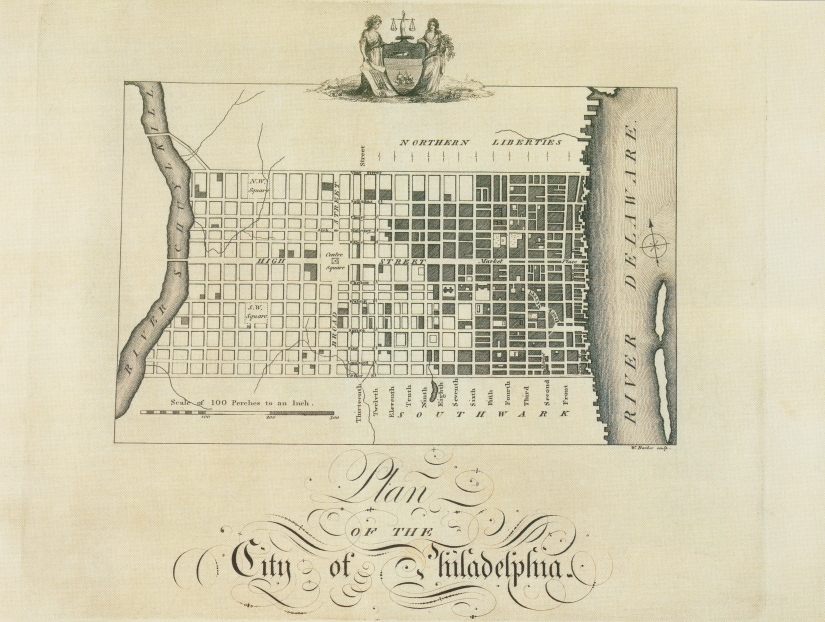
If you’d like to read more about some aspect of late-eighteenth century Philadelphia or the early Federalist period, Patriots & Poisons Booklist is a somewhat extensive but varied list of possible suggestions for further reading.
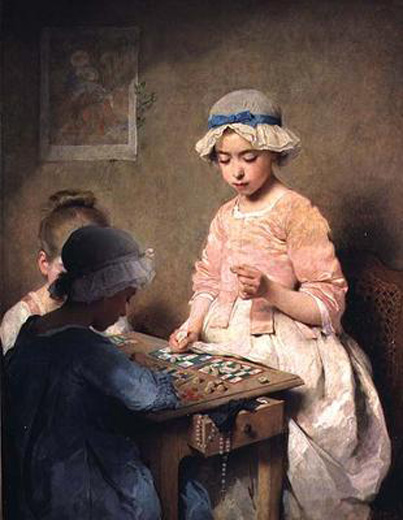
Colonial and Revolutionary Virginia – A few of the many
additional resources for education and fun

Websites
http://www.history.org/kids/index.cfm– Colonial Williamsburg’s “Kids Zone”- lots of fun things.
http://www.mountvernon.org/educational-resources/for-students – Mount Vernon’s website pages for students includes videos, searchable digital encyclopedia, virtual tour.
http://www.gunstonhall.org/index.php/education-research/teachers – From Gunston Hall, fun activities and lesson plans about George Mason, the Bill of Rights, and aspects of 18th century life.
http://www.monticello.org/ – The website of Monticello, home of Thomas Jefferson, has enormous detail on Jefferson and his times.
Historical Fiction
Amanda’s Secret – living on a plantation near Williamsburg, twelve-year-old Amanda is excited to be going to her very first Twelfth Night Ball.Little does she know, however, that her life is about to change forever – a twelfth night charm and a spiteful servant send her on a quest to find out the truth about her past, a secret that’s been hidden from her all along.
Caesar’s Story: 1759 – part of the Colonial Williamsburg Young Americans Book Series, this tells the story of young Caesar, a slave, who wants to be with his family but when the master selects him to be a personal servant in the big house, Caesar has to obey. Others in the series – Nancy’s Story: 1765, Will’s Story: 1771, John’s Story: 1773, Maria’s Story:1775
Meet Felicity – in the first of the American Girl Felicity series, Felicity falls in love with a horse and names her Penny. But Penny is owned by a cruel man who beats his animals. When Penny’s life is in danger, Felicity knows she must help.
Shadows in the Glass House – part of American Girl’s History Mystery series, this tells the story of twelve-year-old Merry Shipman, kidnapped from the streets of London and taken to the Jamestown Settlement in 1621. She’s put to work making glass – the most magical thing she’s ever seen. Problems arise, however, when a midnight intruder makes trouble and tries to frame her only friend.
The Sign of the Beaver – Although he faces responsibility bravely, thirteen-year-old Matt is more than a little apprehensive when his father leaves him alone to guard their new cabin in the wilderness. When a renegade white stranger steals his gun, Matt realizes he has no way to shoot game or to protect himself. When Matt meets Attean, a boy in the Beaver clan, he begins to better understand their way of life and their growing problem in adapting to the white man and the changing frontier.
More reading ideas from educational & library booklists-
http://www2.punahou.edu/Libraries/bishop/HistoricalFictionBookLists.htm
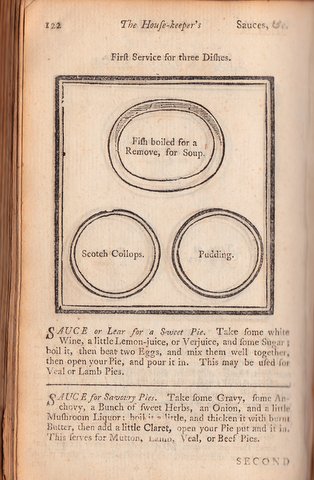
Whether cooking over a camp fire or preparing treats for a banquet or ball, it can be handy to have authentic period recipes — or receipts, as they were called — that are presented in a more comprehensible modern format, with clearer instructions and measurements but without sacrificing authenticity. 
Many period cookbooks can be found online. Here are some useful links – and Google books offers others.
Savoring the Past – 18th and early 19th century cookbooks
Winterthur Digital Collections — recipe books from 1600s to 1900s
Feeding America Online – late 18th century onwards
The Cookbook of Unknown Ladies – “Curious recipes and hidden histories from Westminster City Archives” includes among many other receipts one for haggis and another for a lovely cake.
Larsdatter links to Cookbooks – more 18th century cookbook links on 18th Century Notebook
Jas Townsend has a collection of period cookbook reprints
Searchable links to 18th and 19th century cookbooks on Savoring the Past.
A Book of Cookery, a modern publication, is a handy compendium of receipts from different period cookbooks
For historic receipts written in a present-day style, the Historic Foodways component of Colonial Williamsburg has transformed many original receipts into useful modern ones.
For 17th century recipes (often antecedents of 18th century dishes and interesting to compare), check out the website Gode Cookery.
Here are a few other useful receipts that have been tested by us or knowledgeable friends.
Additional contributions are welcome. (See – Submitting Receipts.)
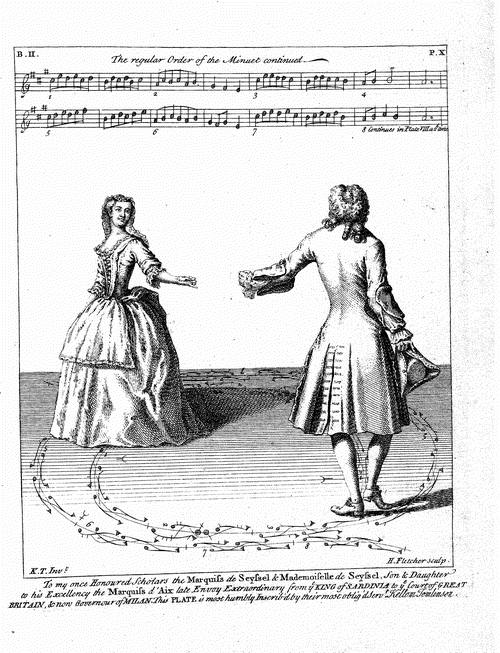
 Minuets were a customary opening for an 18th century American ball. They were danced by one couple at a time, beginning usually with the most important personages. This must have led to dilemmas for those later in the sequence, since the minuet is ultimately a dance for showing off. What are the consequences of upstaging the earlier couples who are more important than you?
Minuets were a customary opening for an 18th century American ball. They were danced by one couple at a time, beginning usually with the most important personages. This must have led to dilemmas for those later in the sequence, since the minuet is ultimately a dance for showing off. What are the consequences of upstaging the earlier couples who are more important than you?
The best overall resource at present for learning and practicing minuets (apart from a proper dance instructor) is Minuets for Dancing, by Charles Cyril and Frances C. Hendrickson — this version, with the CD. The booklet contains general instructions for the minuet step, geography, and deportment, as well as the music and figures for 12 minuets. The CD contains performances of 11 minuets along with music for practicing the steps.
Practicing the steps is of essential importance – to learn the minuet, the first thing is to practice the steps over and over and over, until they are second nature, in parking lots and at odd moments throughout the day. Only then can you focus your full attention on the rest of the minuet. Music is helpful, but you can practice the steps at any time by counting to yourself. (“ONE two three FOUR five six, ONE two three FOUR five six, ONE two three . . . “)
Like the Tango, a minuet is an intensely romantic dance that relies on relatively simple movements, but executed sublimely with an effortless perfection of overall style.
Additional resources on the minuet:
A simple introductory description can be found on the Colonial Music Institute website.
The Baroque Dance page of the Library of Congress collection of Dance Instruction Manuals online contains a short description (see toward the bottom of the page) and links to three period dancing manuals that describe the minuet and video clips of two minuet steps. The above illustration and a number of others can be found in the latter pages of the Tomlinson book.
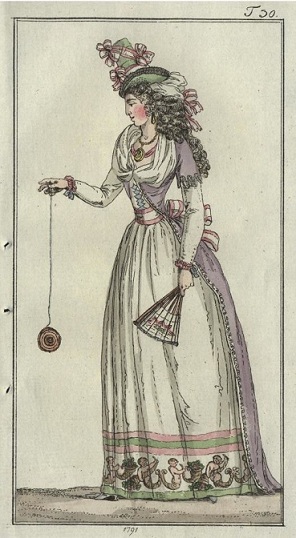

A Brief Discourse on 18th-Century Games, by M. Richard Tully, Ballendalloch Press (Google for various sellers)
The Merry Gamester or Games Through The Ages, by Walter Nelson
The Village Gamester, by Jon Truitt, Nova Anglia Press (available through Amazon)
A Short Treatise on the Game of Whist, Edmond Hoyle 1750
An epitome of Hoyle: with Beaufort and Jones’s Hoyle improved (1791)
Colonial Virginians at Play, Jane Carson (1989)
The Game of Loo (Loo is a very much simpler form of whist, more a game for gambling. This website describes the rules for loo and a number of other games as well.)
History of Mother of Pearl Gaming Chips (the history of betting fish and other gaming chips)
Thomas Rowlandson, “A Gambling Table at Devonshire House,” 1791
Chardin, “The House of Cards,” about 1736-37
Links to Period Objects and Illustrations from “18th Century Notebook” Website: Gaming Equipment, Playing Cards and Card Games, and Toys
Flying Kites – references and pictures
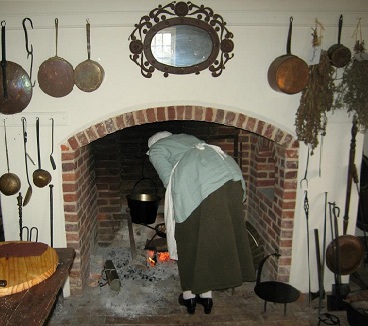
Food and Drink: Website Resources

For authentic recipes, see the links on our Period Cookbooks and Receipts page!
Other resources include –
SavoryFare2 (Yahoo Group)
18th Century Cooking Videos on Youtube from Jas Townsend (this one on building an earthenware oven, but 168 in all)
Savoring the Past (a companion blog)
Food History Jottings (Blog)
A Taste of History with Joyce White (blog with many interesting recipes also)
Hearthcooking.com (a compendium of useful information)
Historic Food (British website, “high-end” cooking)
Website of Clarissa Dillon, noted expert on 18th century domestic arts, focusing on SE Pennsylvania.
For pictures of drinking coffee, tea, and chocolate – and accouterments, here’s a good board on Pinterest.
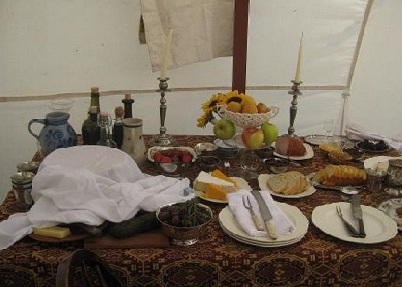
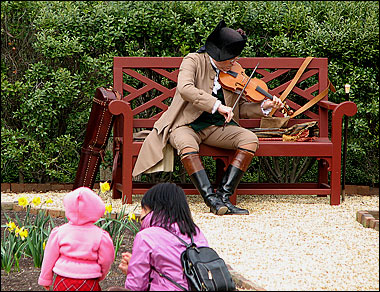

For music and notations, the most useful link is abcnotations.
Some other useful links:
Podcasts from Colonial Williamsburg (for other interesting information, search www.history.org for music.)
Songs to download on Early America website.
Whist is a four person game that was popular, similar to (and a precursor of) bridge today. The persons across the table from each other are partners. To begin, the Dealer shuffles the card, then the person to his right cuts.The dealer deals out all cards, starting with the person on his left. When he comes to the last card (dealt to himself), he turns it over so everyone can see.The suit of this card will be “trump” (hearts, diamonds, clubs, spades). He then picks it up and puts it in his hand, along with the others.
The person on dealer’s left (“The Elder Hand”) begins by laying down a card. This is “the lead”. Each person follows in turn, moving clockwise, until each has played one card.This one round of four cards is called “a trick”.
Each player must follow the suit of the lead card, if he or she has any cards in that suit. So if a heart is led, each player must play a heart. If the player does not have a card in the suit led, however, then he or she may lead a “trump”. The highest card wins – this is called “taking a trick.” Normally the highest card is the highest in the suit that is led, but a card in the trump suit will win over the suit led. That is why it is called “trump” – it trumps anything else.
The partner of whoever wins that round picks up the “trick” (the four cards played) and places it in front of them, face down. The person who wins then leads another card to begin the next round, and so forth until all the cards have been played. This one round of play is the first “hand”.
The players go on to a second “hand,” which is played the same, except the dealer is the next person on the left. Everyone goes on playing hand after hand until the players decide to quit.
For example: Clubs are trump. Player 1 leads the Ace of Hearts. Player 2 plays the four of hearts. Player 3 (the partner of player 1) is out of hearts, so he plays the two of hearts. Player 4 plays the five of hearts. Player 1 wins, with the Ace.
Scoring Each Hand — The couple with the most tricks wins the hand. Each trick over six counts as one point (a “trick point”). More hands are dealt and played until one couple gets the number of points that is set for a “Game.”
Honor points: Honor points are given when one couple has, between their two hands, either three or four of the highest cards (“honors” = Jack, Queen, King and Ace) in the trump suit. Four points are given if they have all four honors, and two points if they have three of the four. To get honor points, the couple must “call honors” – i.e., say that they have the honors.This must be done before the next hand is dealt — normally toward or at the end of the hand, when the honors have been played.
Revokes: A revoke may happen when you mistakenly think you do not have the suit lead and play a trump, but in fact you still have a card in the suit led that you should play.This is something that must be corrected, if possible, before the round is over and the trick is picked up.If not, it is a “revoke”.If the other couple notices this before the game goes on to the next hand, they must “call the revoke” – i.e., say something about it.Then the couple that committed the revoke is given a penalty of three points.The other couple can choose whether to add these three points to their score or deduct them from yours.
Scoring the Game — The number of points in a Game varies. It could be ten points, seven or five. In traditional English play, a game would be ten points. The ten points could be made up entirely of trick points, but there could also be honor points or revokes. It appears that in 18th century America, however, it was more common to play a game of five points (“short whist”) and one might also skip points for honors (but points would still be given for revokes). A game might also be played for seven points.The players should agree on this ahead of time.
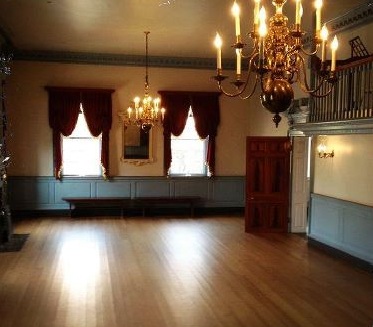
The attitude toward dance among the colonies varied. Philip Fithian, a young Presbyterian student from Princeton hired as a tutor by Virginia’s Robert “King” Carter, quickly discovered that, unlike people in New Jersey, Virginians loved to dance. Dancing masters would travel from plantation to plantation, teaching the children posture, manner and deportment as well as the latest dances. As Lord Chesterfield wrote to his illegitimate son, “If a man walks well, presents himself well in company, wears his hat well, moves his head properly, and his arms gracefully, it is almost all that is necessary,” and the best way to learn it was to study dance.
A ball would typically begin with minuets, danced by one partner at a time. Slow and elegant dances, with an emphasis on intensity and form, minuets were the “tango” of the 18th century. (Click Minuets here for more.) The minuets would likely be followed by the “English country dances,” danced in long lines with partners facing each other, as in this example. Other common types of dances were French cotillions, an early form of “square dance,” and also hornpipes, jigs, and reels.
Selected Bibliography and Resources for 18th Century Dance in America
Kate van Winkle Keller and Charles Cyril Hendrickson have published numerous excellent “how to” books and histories, e.g.
Dance and Its Music in America, 1528-1789
The Playford Ball, 2nd Ed.
No Kissing Allowed in School!
The Richmond Assemblies 1790-1797
A Colonial Dancing Experience
John Griffiths, Dancing Master
Social Dances from the American Revolution
Another noted expert, with emphasis on the more refined and stylized aspect of 18th century dance, is Wendy Hilton —
Dance and Music of Court and Theater (Preview can be found on Google eBooks)
Playford’s The English Dancing Master is now available online. And here’s another version with the music!
For an explanation of the different steps, here are some websites:
Videos of people actually dancing particular dances can sometimes be found on Youtube. Here’s Childgrove for example.
An excellent resource for English Country Dance is the Country Dance and Song Society
A detailed overview of Baroque, late 18th century, and regency dance as well as original dance instruction manuals are available at the Library of Congress website.
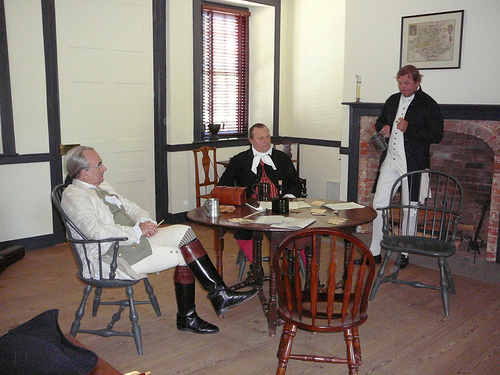
 This website is about eighteenth life – resources for reenacting period life, for education, or just for fun.
This website is about eighteenth life – resources for reenacting period life, for education, or just for fun.
The content focuses in particular on the colonial, revolutionary war, and early federal periods in the eastern (and especially mid-Atlantic) United States.
New items will be added periodically – check back from time to time!